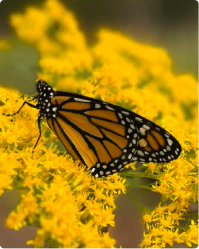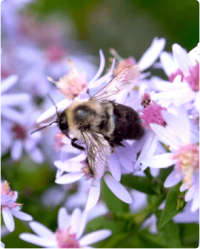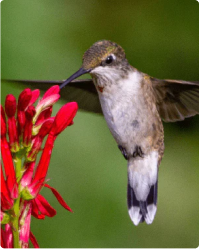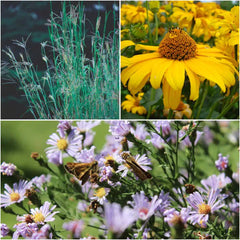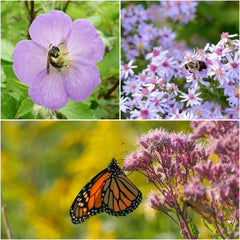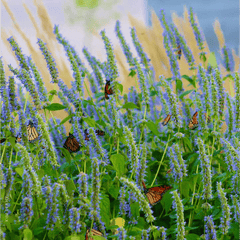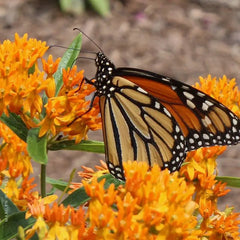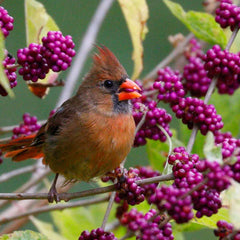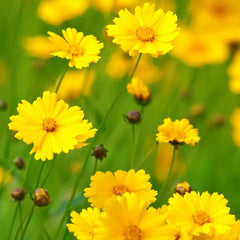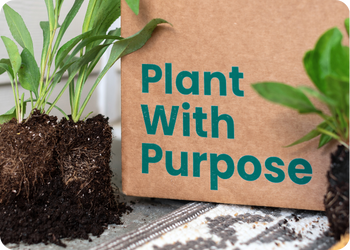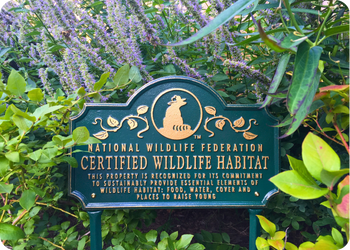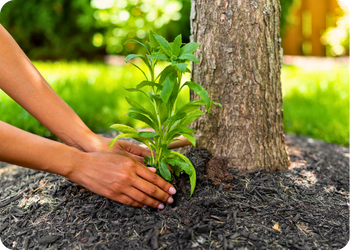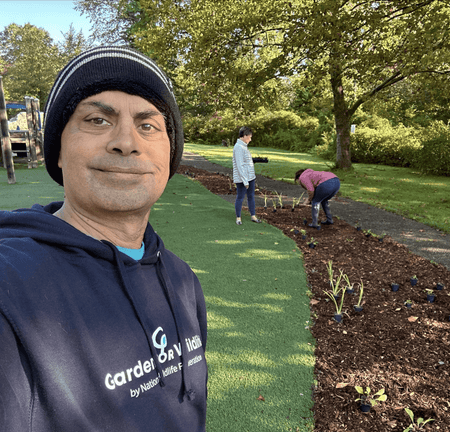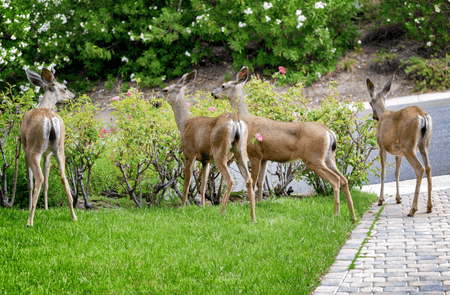24 Native Plants to Create a Buzzing Backyard Sanctuary in 2024

Attract Birds, Butterflies & More in 2024: Your Guide to Stunning Native Plants for a Thriving Wildlife Garden
Native plants play a critical role in supporting the biodiversity of North America's ecosystems. They provide food, shelter, and nesting sites for a variety of wildlife, from birds and butterflies to mammals and insects. Planting native species in your yard or garden is a great way to support local wildlife populations and promote ecological health.
While this list should serve as inspiration for the possibilities native plants can bring, the most important part of gardening for wildlife is ensuring that what you are planting is truly native to your area. You can shop by zip code or even view native plants in every state available.
Which native plants are right for you?
North American Beauties Perfect for Pollinators, Songbirds, and a Healthy Ecosystem
Ready to explore 24 of our favorite native plants that might be right for you to plant in 2024? Use our Plant Finder Quiz to find the right species for your location. Watch our TikTok video and don’t forget to follow us on TikTok.
Goldenrod (Solidago spp.): Goldenrod is an important keystone plant, meaning it plays a critical role in maintaining the health and stability of its ecosystem. There are over 100 species of goldenrod in North America like sweet goldenrod, grayleaf goldenrod, or zigzag goldenrod. Goldenrod is a beautiful and easy-to-grow plant that provides important food for a variety of wildlife, including bees, butterflies, and birds.

Read: The Goldenrod Allergy Myth
Coneflower (Echinacea spp.): Purple coneflowers are another popular plant that's easy to grow and provides food for a variety of wildlife. The bright, showy flowers are attractive to butterflies, bees, and other pollinators, and the seeds are a favorite of finches and other small birds.

Black-eyed Susan (Rudbeckia hirta): Black-eyed Susan is a bright, cheery wildflower that attracts a variety of pollinators, including bees, butterflies, and flies. In addition to its benefits for pollinators, Black-eyed Susan is also an important food source for birds, particularly during the fall and winter months. The plant produces large quantities of seeds, which are high in protein and fat, providing valuable nutrition for many bird species.

Orange butterfly weed (Asclepias tuberosa): Butterfly weed is a type of milkweed that produces bright orange flowers. Milkweed is an essential plant for the survival of the monarch butterfly. The leaves are the only food source for monarch caterpillars, and the flowers provide nectar for adult butterflies, as well as other pollinators like bees and hummingbirds.

Wild bergamot (Monarda fistulosa): Wild bergamot is a native wildflower that produces clusters of pink or lavender flowers that attract bees, butterflies, and hummingbirds.

Smooth blue aster (Symphyotrichum laeve, Aster laevis): Native perennial wildflower with blue-purple flowers that blooms in late summer to early fall, attracting bees, butterflies, and other pollinators. One of the main benefits of smooth blue aster is that it provides an important source of late-season nectar for pollinators. As other plant species start to fade, smooth blue aster continues to bloom, providing a valuable food source for pollinators that are preparing for winter.
Oxeye sunflower (Heliopsis helianthoides): Native perennial wildflower with large, daisy-like flowers that blooms in mid to late summer, attracting bees, butterflies, and other pollinators.
Swamp milkweed (Asclepias incarnata): Native perennial with pink to red flowers that is one of the primary host plants for monarch butterflies, whose larvae feed exclusively on the leaves of milkweed plants. Swamp milkweed can be used in a variety of landscaping settings, from rain gardens to meadow plantings to mixed borders. It is also an excellent choice for planting near wetlands, streams, or other bodies of water, where it can help stabilize the soil and prevent erosion.
Whorled milkweed (Asclepias vertillicata): Native perennial with clusters of small, white or greenish flowers that blooms in mid to late summer, attracting butterflies, especially monarchs.
Golden Alexander (Zizia aurea): Native perennial with clusters of small, bright yellow flowers that blooms in early to mid-summer, attracting bees and other pollinators. One of the main benefits of Golden Alexander is that it serves as a host plant for the larvae of the black swallowtail butterfly (Papilio polyxenes), which use the leaves as a food source during their development.
Anise hyssop (Agastache foeniculum): a valuable native plant that provides a range of benefits to both wildlife and gardeners. Its pollinator-friendly flowers, medicinal properties, aromatic foliage, drought-tolerance, and deer-resistant properties make it a great choice for those looking to add beauty and biodiversity to their garden or landscape. The leaves of Anise hyssop have a pleasant licorice-like aroma that can be enjoyed when the plant is brushed against or crushed. This makes it a great choice for herb gardens or as a fragrant addition to a mixed border.
Rough blazing star (Liatris aspera): Native perennial with tall spikes of purple flowers that blooms in late summer to early fall, attracting bees, butterflies, and other pollinators.
Cardinal flower (Lobelia cardinalis): Native perennial with tall spikes of bright red flowers that blooms in mid to late summer, attracting hummingbirds and butterflies. The bright red, tubular flowers of the Cardinal flower are highly attractive to hummingbirds, which visit the flowers for their nectar. Bees and butterflies also visit the flowers for their nectar, which is a valuable food source for these important pollinators.
Dense blazing star (Liatris spicata): With its stately purple plumes and delicate grass-like foliage, Dense Blazing Star is a low maintenance beauty that will provide a an oasis to birds, butterflies, and other important pollinators. It will add stunning texture and color to your spring and fall garden. It is perfect for full sun spaces that get six or more hours of sun per day.
Eastern Columbine (Aquilegia canadensis): Native perennial with unique, bell-shaped flowers in shades of red and yellow that blooms in late spring to early summer, attracting hummingbirds and bees. The plant's foliage and seeds can be used as a food source, while the plant's height and structure can provide shelter and cover. Because of its ability to self-seed, Eastern Columbine is a great choice for gardeners who are looking to create a natural-looking garden or meadow. It can quickly establish itself and spread, creating a beautiful and diverse planting.
Scarlet sage (Salvia coccinea): Native perennial with bright red flowers that blooms in late spring to early summer, attracting hummingbirds, bees, and butterflies. Salvia coccinea blooms from early summer to frost, providing a steady source of nectar for pollinators throughout the growing season.

Foxglove beardtongue (Penstemon digitalis): Native perennial with tall spikes of pink to lavender flowers that blooms in late spring to early summer, attracting bees, butterflies, and hummingbirds. Foxglove Beardtongue is a beautiful plant that adds vertical interest and texture to gardens and landscapes. It is often used as a backdrop for shorter plants or as a focal point in a garden bed. Foxglove Beardtongue is drought-tolerant once established, making it a great choice for gardeners in dry climates or those looking to reduce water usage in their gardens.
Spotted Joe Pye Weed (Eutrochium maculatum): Spotted Joe Pye Weed is appreciated for its easy maintenance, hardy tolerance and strong stature. These sturdy plants are noted for their tall, purple-stained stems that are branched with clusters of showy mauve flowers. Often fragrant, these flowers attract bees and butterflies in search of nectar.
Blue mistflower (Conoclinium coelestinum): blooming in late summer to early fall, Blue mistflower produces clusters of small, blue-purple flowers that are highly attractive to bees, butterflies, and other pollinators. This makes it an important source of food for these beneficial insects.
Lanceleaf coreopsis (Coreopsis lanceolata): With blooms lasting for weeks on end, Lanceleaf Coreopsis is a great addition to your wildlife garden. Golden yellow flowers create a glorious early summer display attracting numerous butterflies. Songbirds will feast on the late summer seeds.
Great blue lobelia (Lobelia siphilitica): native wildflower with bright blue flowers on tall spikes that attract hummingbirds and butterflies. Create a larger haven for critical wildlife species when you add these plants to your existing wildlife garden.
Sneezeweed (Helenium autumnale): This tall native will produce an abundance of yellow blooms in late summer to fall. The bright flowers will attract butterflies and native bees. This plant will do best in full sun and moist well, drained soil. Making it a perfect addition to a rain garden. The common name is based on the former use of its dried leaves in making snuff, inhaled to cause sneezing that would supposedly rid the body of evil spirits.
Wild geranium (Geranium maculatum): Add some early color to your garden this spring with wild geranium! Spring pollinators including native bees and several species of butterflies are drawn to its nectar and pollen.
Frogfruit (Phyla nodiflora): Frogfruit is a low-growing, evergreen perennial with charming white to pinkish flowers that provide nectar to a variety of bees and butterflies. It forms dense mats and makes an excellent groundcover or lawn alternative. Adaptable to a range of soil moisture conditions—from dry to moist—it can also be grown in containers.

By planting a diverse selection of native wildflowers in your garden, you can help support a wide range of pollinators and promote a healthy and vibrant ecosystem.
To explore other native trees and wildlife, try the National Wildlife Federation Native Plant Finder.
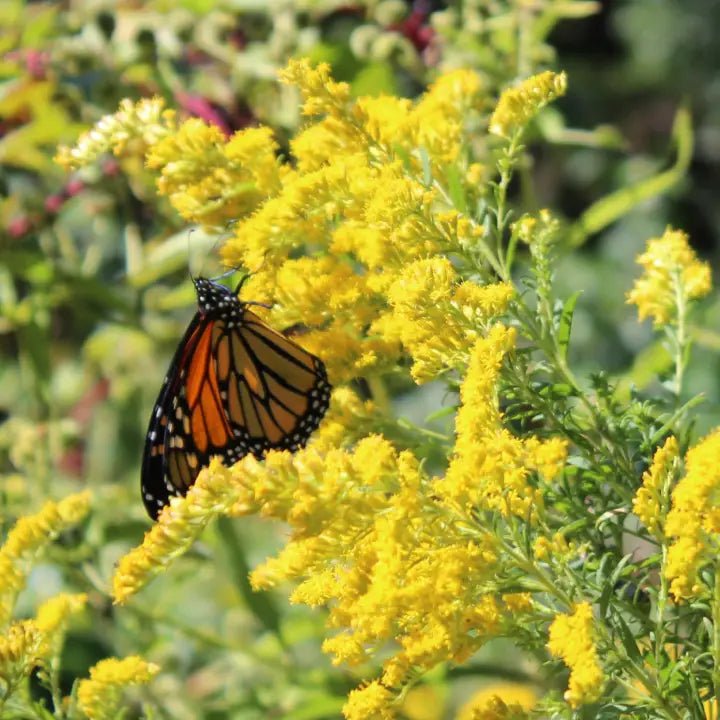
Find Native Plants by Zip Code
We took the guesswork out of planting native. Check your zip to see what ships!
